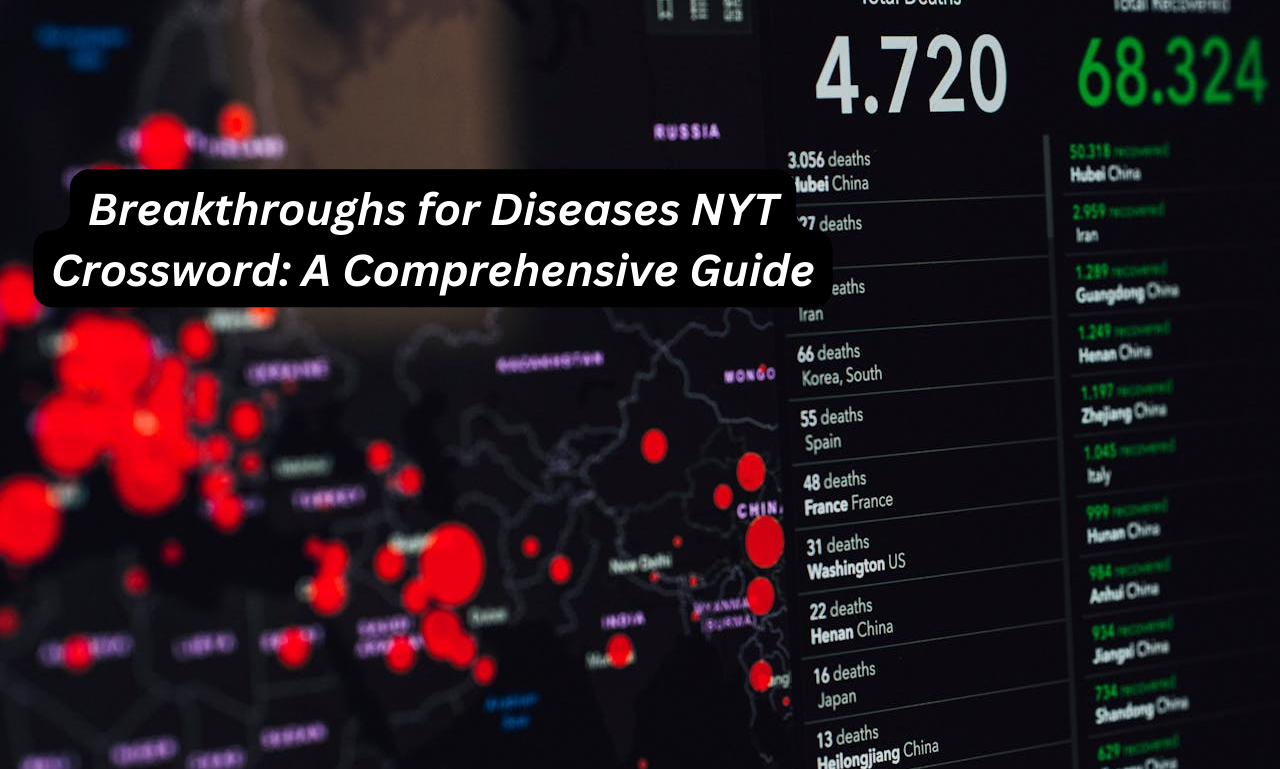The New York Times Crossword is renowned for its clever clues and diverse range of topics. One intriguing category of clues often found in the puzzle is related to medical advancements, particularly breakthroughs for diseases NYT Crossword. Solving these clues not only provides a mental challenge but also raises awareness about significant strides in medical science. This article will explore how to approach these crossword clues and offer insights into some notable medical breakthroughs that could be featured.
Understanding the Clue: Breakthroughs for Diseases NYT Crossword
Clues related to “breakthroughs for diseases” in the NYT Crossword typically refer to significant medical advancements, new treatments, or innovative research findings. These clues can encompass a broad range of medical topics, from vaccines and drugs to cutting-edge technologies and research methodologies.
Common Answers to Breakthroughs for Diseases NYT Crossword
- VACCINE: Vaccines are among the most impactful medical breakthroughs, preventing diseases like polio, measles, and, more recently, COVID-19.
- THERAPY: This could refer to various treatments, including gene therapy, immunotherapy, and targeted therapy for cancer.
- CURE: While rare, some diseases have been effectively cured, such as certain types of hepatitis with antiviral drugs.
- RESEARCH: Ongoing scientific research is crucial in finding new treatments and cures for diseases.
- DRUGS: New medications, such as antiretrovirals for HIV, represent major advancements in disease management.
Notable Medical Breakthroughs
To solve crossword clues about disease breakthroughs, it’s beneficial to familiarize yourself with some of the most significant medical advancements. Here are a few notable examples:
1. mRNA Vaccines
Key Term: VACCINE
The development of mRNA vaccines, particularly for COVID-19, has been a monumental breakthrough. Companies like Pfizer-BioNTech and Moderna used mRNA technology to create vaccines that teach cells to produce a protein that triggers an immune response. This technology has the potential to revolutionize vaccine development for other diseases as well.
2. CRISPR-Cas9 Gene Editing
Key Term: CRISPR
CRISPR-Cas9 is a groundbreaking gene-editing technology that allows scientists to alter DNA with high precision. This has vast implications for treating genetic disorders, such as cystic fibrosis and sickle cell anemia. The potential for CRISPR to correct genetic defects and prevent inherited diseases marks a significant leap forward in medical science.
3. CAR-T Cell Therapy
Key Term: THERAPY
Chimeric Antigen Receptor (CAR) T-cell therapy is an innovative treatment for certain types of cancer. It involves altering a patient’s T lymphocytes to combat cancer cells with more power. This personalized approach has shown remarkable success in treating leukemia and lymphoma, offering new hope to patients with these conditions.
4. Antiviral Drugs for Hepatitis C
Key Term: DRUGS
The development of direct-acting antiviral drugs has transformed the treatment of hepatitis C. These medications can cure over 90% of patients, drastically reducing the disease’s burden. This breakthrough represents one of the most significant achievements in infectious disease treatment.
5. Monoclonal Antibodies
Key Term: ANTIBODIES
Monoclonal antibodies are lab-made proteins that can bind to specific targets on cells. They have become essential in treating various conditions, including autoimmune diseases and cancers. Recently, monoclonal antibodies have been used to treat COVID-19, highlighting their versatility and impact.
Also Read: Red Spots on Skin NYT Crossword: A Solver’s Guide
Tips for Solving Medical Crossword Clues
To become adept at solving medical-themed crossword clues, consider the following tips:
1. Stay Informed
Keeping up with the latest medical news and breakthroughs will enhance your ability to solve related crossword clues. Read reputable sources such as medical journals, health news websites, and even the science section of the New York Times.
2. Learn Medical Terminology
Familiarize yourself with common medical terms and abbreviations. Understanding terms like mRNA, CRISPR, CAR-T, and monoclonal can give you a significant advantage when tackling crossword puzzles.
3. Use Cross-Referencing
Look at the intersecting answers in the crossword puzzle to help determine the correct solution for the medical clue. This strategy can narrow down the possibilities and guide you to the right answer.
4. Think Broadly
Medical breakthroughs can encompass a wide range of topics, from specific drugs and treatments to general advancements in research. Be open to various possibilities when considering answers.
5. Practice Regularly
Regular practice with crosswords will improve your overall solving skills and increase your familiarity with recurring medical clues. The more you practice, the more intuitive these puzzles will become.
Conclusion
The clues related to breakthroughs for diseases NYT Crossword, challenging solvers to think about the latest advancements in medical science. Understanding key medical breakthroughs, such as mRNA vaccines, CRISPR gene editing, CAR-T cell therapy, antiviral drugs for hepatitis C, and monoclonal antibodies, can provide valuable context for solving these clues. By staying informed and practicing regularly, you can enhance your crossword-solving skills and deepen your appreciation for the incredible progress being made in the fight against diseases. Happy puzzling!
FAQs: Breakthroughs for Diseases
- What are some recent breakthroughs in disease treatment?
Recent breakthroughs in disease treatment include mRNA vaccines for COVID-19, CRISPR-Cas9 gene editing for genetic disorders, CAR-T cell therapy for certain cancers, direct-acting antiviral drugs for hepatitis C, and monoclonal antibodies for various conditions, including COVID-19.
- How do mRNA vaccines work?
mRNA vaccines work by using a small piece of the virus’s mRNA to instruct cells in the body to produce a protein that triggers an immune response. When the virus comes back this immune response aids the body’s ability to identify and combat it.
- What is CRISPR-Cas9 gene editing?
With the use of the gene-editing technique CRISPR-Cas9, researchers may precisely alter DNA. It can be used to correct genetic defects, treat genetic disorders, and has the potential to prevent inherited diseases by altering genes at the molecular level.
- What is CAR-T cell therapy and what cancers does it treat?
CAR-T cell therapy is a type of immunotherapy that modifies a patient’s T-cells to better recognize and attack cancer cells. It has been particularly effective in treating blood cancers such as leukemia and lymphoma.

